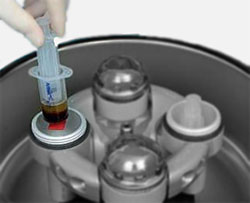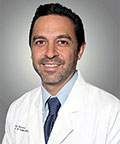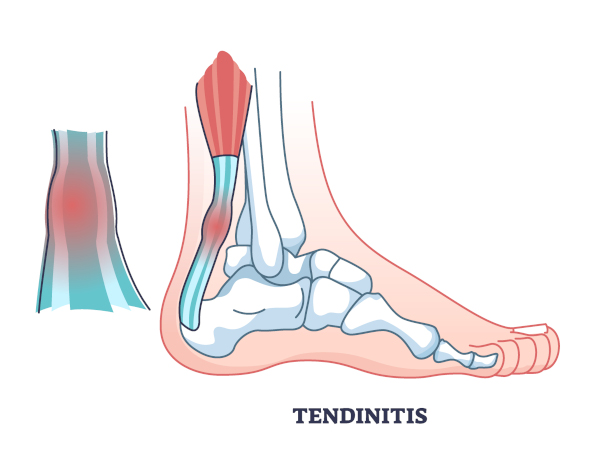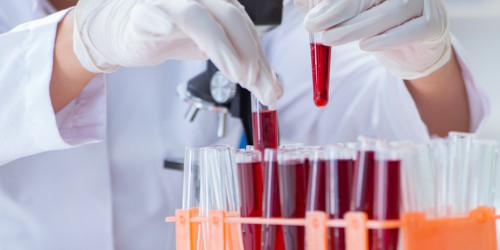- Home
- Advanced Treatments
- Platelet Rich Plasma (PRP)
Platelet-rich plasma (PRP) for chronic pain
- Published 11/26/2018
- Last Reviewed 3/7/2024
Platelet-rich plasma (PRP) therapy is a cutting-edge regenerative medicine that enhances the body's natural healing processes to treat ligament, tendon, bone, and cartilage injuries and enhance healing post-surgery. Our team of experts has witnessed firsthand the transformative potential of PRP therapy in orthopedic care. This innovative treatment offers a promising alternative to traditional methods, providing patients with a minimally invasive option that can accelerate recovery and improve outcomes.
The use of PRP has gained significant popularity in the field of sports medicine and orthopedics for its power to enhance the healing of both acute and chronic ailments. If physical therapy and rest aren't successful in treating injured or damaged tendons, PRP may be recommended.
The goal of PRP is to reduce pain, repair damaged tendon tissue, and improve joint function.
- How does platelet-rich plasma therapy work?
- The benefits of PRP therapy
- PRP therapy for bone healing and cartilage repair
- PRP application in ligament and tendon injuries
- Enhancing surgical recovery with PRP
- What are the side effects of PRP?
- University Foot & Ankle Institute: rich in knowledge
- PRP FAQs
- Platelet-rich plasma vs corticosteroid injections, what’s the difference?
- Is PRP therapy painful?
-
ABFAS® Board Certified in Foot Surgery and Reconstructive Rearfoot and Ankle Surgery. and Director of University Foot and Ankle Institute
Dr. Bob Baravarian DPM, FACFAS is a Board-Certified Podiatric Foot and Ankle Specialist. He is an assistant clinical professor at the UCLA School of Medicine and serves as Director of University Foot and Ankle Institute.
Dr. Baravarian has been involved in athletics his entire life and played competitive tennis in high school and college. He has an interest in sports medicine, arthritis therapy, and trauma/reconstructive surgery of the foot and ankle. He is also fluent in five languages (English, French, Spanish, Farsi, and Hebrew),
-
ABFAS® Board Certified in Foot Surgery and Reconstructive Rearfoot and Ankle Surgery. and Director of University Foot and Ankle Institute
Dr. Bob Baravarian DPM, FACFAS is a Board-Certified Podiatric Foot and Ankle Specialist. He is an assistant clinical professor at the UCLA School of Medicine and serves as Director of University Foot and Ankle Institute.
Dr. Baravarian has been involved in athletics his entire life and played competitive tennis in high school and college. He has an interest in sports medicine, arthritis therapy, and trauma/reconstructive surgery of the foot and ankle. He is also fluent in five languages (English, French, Spanish, Farsi, and Hebrew),
Read more about Platelet Rich Plasma (PRP) on Our Blog
 I was very happy to find the university foot and ankle institute. Everyone is very helpful and I felt I had a great caring doctor.Orchid C.
I was very happy to find the university foot and ankle institute. Everyone is very helpful and I felt I had a great caring doctor.Orchid C. Please provide handicap parkingBarry S.
Please provide handicap parkingBarry S. Dr. Franson is a caring and thoughtful Doctor. He listens to your concerns and uses his best judgement to try and help you. He ...Joanna S.
Dr. Franson is a caring and thoughtful Doctor. He listens to your concerns and uses his best judgement to try and help you. He ...Joanna S. Dr. Ambibola Johnson is awesome!Laurie S.
Dr. Ambibola Johnson is awesome!Laurie S. I appreciate the care and timeliness of all my appointments I’ve had at UFAI. Gray, Lydia and the staff all are wonderful. Lydi...Edelmira G.
I appreciate the care and timeliness of all my appointments I’ve had at UFAI. Gray, Lydia and the staff all are wonderful. Lydi...Edelmira G. Very greatfull for the doctor and stuffJesus M.
Very greatfull for the doctor and stuffJesus M. Doctor was very caringBrigitte S.
Doctor was very caringBrigitte S. Great staff! I saw Dr Yau who was awesome. Great "bedside manners". The entire staff and Doctors here are above par - you se...Deb M.
Great staff! I saw Dr Yau who was awesome. Great "bedside manners". The entire staff and Doctors here are above par - you se...Deb M. Everyone is very nice and efficient-
Everyone is very nice and efficient-
Especially Dr Kelman. He takes very good care of me!!Claudia K. Great costumer service.
Great costumer service.
Prompt and efficientDean W. No . I’m pleased with the care .Michael P.
No . I’m pleased with the care .Michael P. Appreciate the professionalism and expertise, as well as the caring.Stella G.
Appreciate the professionalism and expertise, as well as the caring.Stella G.



